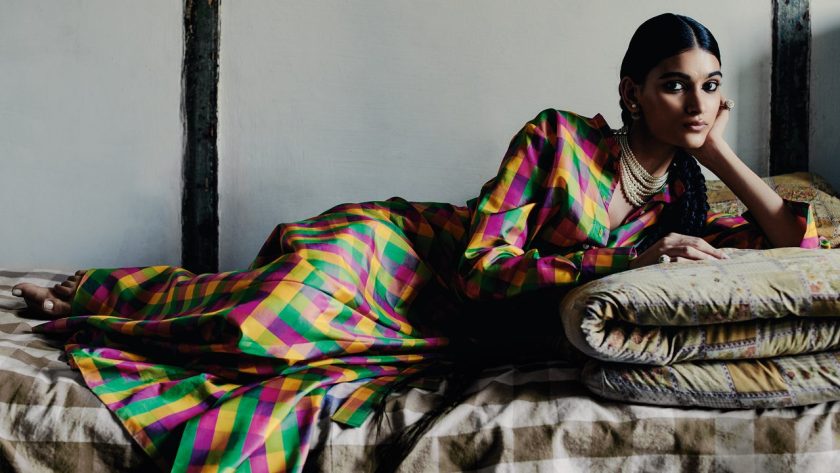One night a few months ago, I was scouring my usual list of secondhand websites—The RealReal, eBay, Grailed—when I spotted it: a vintage Jean Paul Gaultier top plastered with imagery of cowboys and Native Americans. Sigh. It’s certainly not the first time I’ve seen my Indigenous culture reduced to a kind of gimmick. Growing up Ojibwe on the Nipissing First Nation reservation in northern Ontario, only rarely did I see the beauty of our people and their designs authentically reflected in the fashion world; all too often, we were reduced to caricatures instead.
But I bought that shirt, which now rests in my growing collection of fashion pieces that feature various elements of cultural appropriation. Of course, this isn’t a new concept: Appropriation—in this case, using style cues and motifs from cultures that aren’t one’s own, often without credit and in stereotypical or racist ways—has a long history in fashion. Far more than simply drawing inspiration, designers—often from white or Eurocentric backgrounds—have long mined from minority groups, adopting their underrepresented craftwork or techniques before passing them off as their own. It’s something that can be seen at least as far back as the 18th century with the chinoiserie movement, when European designers became fascinated with the motifs found in traditional Chinese dress.
“Appropriation is when you turn something into a costume—like wearing a qipao with chopsticks in your hair,” says Chinese American designer Kim Shui, who incorporates qipao-style collars into her own pieces but has seen other designers plagiarize the style—as well as larger brands pigeonhole entire vast, kaleidoscopic cultures into one specific look and co-opting it. “It’s not coming from a genuine place.”
About a year ago, after seeing more and more harmful interpretations of my own Indigenous culture resurface on the resale market, I made it my new hobby to collect these pieces. My archive includes a gold cocktail ring from an Italian luxury label in the shape of a cartoonish headdress, as well as a vintage sports tee with the derogatory term “Squaw” written on it. (My most recent acquisition: a strapless Jean-Charles de Castelbajac dress printed with headdress-wearing stick figures bearing savage grimaces.)
Why would I willingly spend money on items that I have no intention of wearing? It’s simple: Because purchasing them takes them off the market. They also—by spotlighting an era in fashion that left a lot to be desired in terms of inclusivity—have a historical value. “Back in the day, there were so many Chinese-inspired collections or geisha costumes,” says Shui, nodding to the 1990s and 2000s, when the runways were particularly rife with appropriation. “It’s almost like we had to get to that place to be able to bring more awareness to things now.”
More recently, thanks largely to social movements such as Black Lives Matter, there’s been a major shift in public consciousness around racism and matters of cultural sensitivity. By connecting directly with artisans from various communities to spotlight their unique beauty—from the point of view of those communities’ members—designers are able to reflect a more thoughtful appreciation of cultures that inspire their work without merely appropriating them.
Through her accessories label Brother Vellies, for instance, Aurora James is collaborating directly with artisans in Africa to produce shoes and handbags. “We need to celebrate artisans doing this traditional work so they can create a living for themselves and continue preserving their craft,” says James. “I want people to consider working with these artisans instead of just putting them on their mood boards.”
Christian Dior’s Maria Grazia Chiuri has also been working fiercely at overturning the tides of appropriation via her splashy runway shows. In a space where so few designers have been uplighting different cultures, Chiuri has not only made doing so an intentional mandate of the brand—she’s put it front and center. “This is my obsession,” says Chiuri. “It’s the most important thing for the future of fashion. There is a lot of knowledge, culture, and history (to preserve).”



